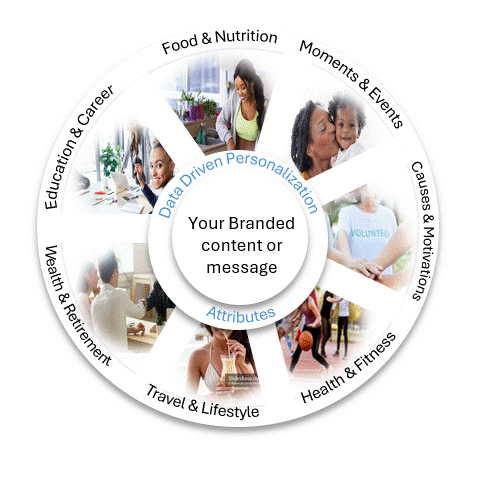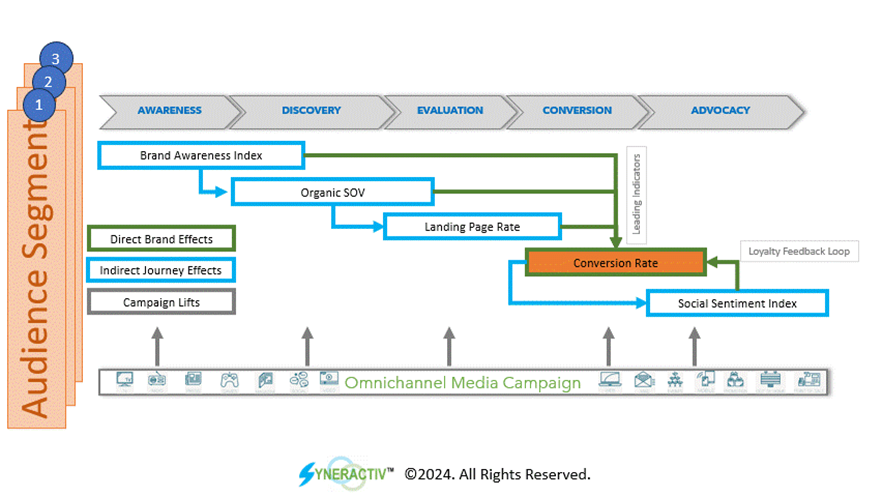You’ve heard it from the experts, seen it in your own tests: consumers crave personalized ads. Armed with this knowledge, you invested millions in a cutting-edge tech stack, only to find your ROI falling short. But fear not, you’re not alone in this struggle. Despite the hype surrounding personalization, Martech utilization rates are plummeting, leaving marketers scratching their heads.
Here are 3 Sneaky Ways You Might be Undermining Yourself
So, what exactly is marketing personalization?
It’s the magic sauce that tailors brand experiences to individual tastes, needs, and preferences. Whether it’s clever retargeting or AI-driven content customization, personalization is the key to capturing today’s discerning consumer.
But does it pay off? Absolutely! When done right, personalized marketing can slash acquisition costs, boost revenues, and supercharge ROI.
Per McKinsey, personalized marketing “can reduce customer acquisition costs by as much as 50 percent, lift revenues by 5 to 15 percent, and increase marketing ROI by 10 to 30 percent”.
It is table stakes in order to engage the omnichannel consumer looking for a seamless brand experience. Th premise is simple- the objective of advertising is to connect brand values and benefits with consumer need-states. Personalization makes that connection both stronger and more relevant to customer-specific context, compared to non-personalized ads.
And while at times it may seem like rocket science, the process is fairly straightforward: define your audience personas and journeys, create asset options, test and optimize.

But here’s the kicker: despite consumers craving personalization, many are hesitant to share the data needed to make it happen. Trust issues abound, with privacy concerns casting a shadow over personalized marketing efforts.
According to a BCG study, while two-thirds of consumers want ads that are personalized to their interests, nearly half are uncomfortable sharing the data needed to personalize ads. Primarily driven by a lack of trust. For instance, an Innovid study indicates that 43% of consumers want ads to be personalized. That number is 76% according to Zendesk. But independent and academic research indicate otherwise. A Global Witness study indicated that only 11% of consumers in Europe were OK with personalized targeting.
As marketers struggle to maintain the delicate balance between data privileges vs. data obligations, the majority seem to be only moderately satisfied with their personalization efforts.

Image: Ascend2
And thus, personalization stepping-stones morph into stumbling blocks and three hide in plain sight:
1️⃣ Too much of a good thing: Personalization doesn’t happen without a lot of personal data. When we have too much of something, we tend to over-use it. In this case, over-personalize it.
Consumer relationships, like personal ones, have an obligation to respect personal boundaries and not abuse the privilege that comes with familiarity. Campaign strategists that are even moderately slipshod on this obligation are met with consumer reticence at their personalization efforts. Like this Reddit thread of users frustrated with age-triggered personal care marketing, including women receiving ads for baby products upon turning 30.
Another area of overreach is personalization around socio-cultural causes important to specific consumers or consumer groups. Engaging with consumers on deep-seated topics without commitment will be seen by consumers for what it is: shallow and self-serving.

In contrast is Nike’s strategy of incorporating in its messaging only issues that are related to its core focus, and then standing behind it, as they proved with Kapernick and the social justice movement. And incorporating socio-cultural issues cannot be just campaign centric, it works only if it is incorporated into the brand purpose as Dove has shown with its Self-Esteem Project that extends upon the work of the Real Beauty campaign.
2️⃣ Putting all your data eggs in the first-party basket: Third-party cookies are the crack cocaine the ad industry was addicted to (it is not gone yet, but should already have). Majority of 3P cookies having a lifespan of less than 30 days implies poor continuity of customer visibility over any meaningful journey length. 3P cookies also have abysmal match rates, on average below 40%, meaning that more than half of campaign impressions run the risk of falling outside core targeted audiences, thereby driving lifts down, and more importantly providing misleading signals back on creative optimization. As the industry finally kicks the 3P cookie habit, they need to have a strategy bespoke to their unique situation.
As 3P cookies fade into obscurity, first-party data reigns supreme. First-party (and Zero-party) data popularity has achieved cult status. So, at the risk of sounding sacrilegious, let me say that relying solely on first-party data is not good personalization strategy.
Question is not if, but how much of your data strategy should include 1P? Do your industry dynamics allow it to be scalable? Verticals like CPG and Pharma that do not own the last mile to the consumer have to rely on low-response CRM campaigns to build 1P data that often cover less than 5% of their consumer-base (based on typical brand penration rates of 2-6%).
Without adequate enrichment through second and third-party data, first-party data alone doesn’t provide insights into other aspects of customers including attitudes, affinities and lifestyles that are critical for personalization at scale, especially for acquisition efforts beyond your first-party footprint. Unlike 3P cookies, 3P data is not going away and plays an important role in providing holistic insights, leading to a more engaging consumer experience.

Precision across all of the consumer touchpoints are impacted when incomplete data is used to drive personalization, resulting in irrelevant or even irksome personalized content.
Another aspect to consider is that 1P data acquisition beyond repeat customers is an exponential cost model, especially when going beyond the basics like email, purchase history, loyalty programs and website data capture to more sophisticated programs including zero-party value exchange collaborations and mobile apps. The typical consumer engages with over 100 brands. Think about your app vying for attention from over 99 others. If you are not a top 10 market-share holder, apps may not be a sustainable 1P data capture strategy.
Let’s assume that you do get a successful 1P data capture process going. You still just see your customers, which is great for retention campaigns, but acquisitions are left in the lurch. Also, your best customers may not always be the ones you already have.
All your problems aren’t going to become nails because you decided to invest just in a hammer (sorry, l couldn’t resist the cliché).
3️⃣ Not Measuring What Matters: With so many moving parts, hyper-personalized omnichannel campaigns tend to generate massive volumes of data. With a barrage of data flooding in, it’s easy to lose track of how personalization is moving the needle along the consumer experience journey.

Measurement plans are often fragmented across individual campaign goals, yielding a disjointed assortment of metrics and a suboptimal decision management process.

What is required is a framework that holistically captures the richness of personalization’s impact across an intricate consumer journey.

Build a measurement framework that aligns with your omnichannel personalization goals. One that measures what matters, not what is convenient.
So, to summarize, don’t sabotage your marketing personalization program. While it may be tempting to use all the data in your tech stack, ask your data-driven marketing team if they know where the line is between personalizing and over-personalizing. And while you have their attention, ask them if your cookieless eggs are all in the first-party data basket or if their requirements and use-cases need a more diversified data strategy. And finally, if your omnichannel personalization strategy and metrics don’t seem to see eye-to-eye, ask yourself if your measurement framework is deadweight and if you should start afresh.
Ready to take your personalization game to the next level?
Stay tuned for our next installment, where we’ll reveal how to turbocharge your marketing personalization program in under 10 minutes! 🚀